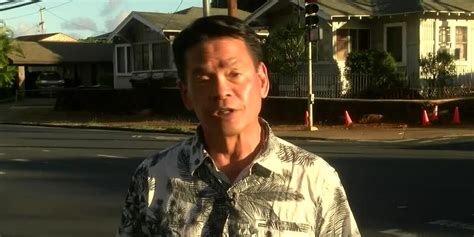
Kaimuki residents are calling for the demolition of a newly constructed home they deem a “monster home,” alleging it violates city codes and disrupts the neighborhood’s character.
Residents of Kaimuki are up in arms over a newly built residence at 3534 Maunalei Avenue, which they describe as a “monster home” that clashes with the neighborhood’s aesthetic and potentially violates city ordinances. The controversy has ignited a debate over development, zoning regulations, and the preservation of community character in Honolulu.
The contested property, now substantially larger than its original footprint, has become a focal point for local discontent. Neighbors claim the construction not only dwarfs surrounding homes but also disregards established height and setback restrictions. This has led to concerns about obstructed views, reduced sunlight, and a general decline in the quality of life for nearby residents.
“It’s not about stopping development,” stated one resident, echoing the sentiments of many in the community. “It’s about responsible development that respects the character of our neighborhoods and adheres to the rules.”
The discontent has culminated in a petition, signed by numerous Kaimuki residents, demanding that the city take action to rectify the situation, including the potential demolition of the non-compliant portions of the structure. The petition underscores the community’s resolve to protect their neighborhood from what they view as overdevelopment and disregard for local zoning laws.
At the heart of the matter are Honolulu’s zoning regulations, which are designed to manage growth and preserve the unique character of its diverse neighborhoods. Residents argue that the construction at 3534 Maunalei Avenue represents a blatant disregard for these regulations, potentially setting a dangerous precedent for future development projects.
“If we allow this to stand, what’s to stop other developers from doing the same?” asked another resident, highlighting the fear that this case could open the floodgates to similar projects that prioritize profit over community well-being.
The city’s Department of Planning and Permitting (DPP) is now under pressure to investigate the allegations and determine whether the construction adheres to all applicable codes and regulations. The outcome of this investigation could have significant implications for the future of development in Kaimuki and other historic neighborhoods throughout Honolulu.
The “monster home” controversy in Kaimuki is not an isolated incident. Similar disputes have arisen in other communities across the country, as developers seek to maximize profits by building larger homes on existing lots. These conflicts often pit developers against residents who are determined to protect their neighborhoods from overdevelopment and preserve their unique character.
The Kaimuki case highlights the importance of robust zoning regulations, effective enforcement, and community engagement in managing growth and ensuring that development benefits both developers and residents. It also underscores the challenges of balancing the need for housing with the desire to preserve the character and quality of life in established neighborhoods.
The construction at 3534 Maunalei Avenue has significantly altered the streetscape, casting shadows and obstructing views that residents previously enjoyed. This has raised concerns about property values and the overall desirability of the neighborhood.
“We moved here because of the charm and character of Kaimuki,” said one long-time resident. “This new construction is completely out of scale and detracts from everything that makes this neighborhood special.”
Residents also expressed concerns about the potential environmental impact of the construction, including increased stormwater runoff and the loss of green space. They argue that the project is not only aesthetically displeasing but also unsustainable and harmful to the environment.
The debate over the “monster home” in Kaimuki has exposed deep divisions within the community. Some residents support the project, arguing that it represents progress and provides much-needed housing. Others vehemently oppose it, claiming that it violates zoning laws and destroys the neighborhood’s character.
The controversy has also raised questions about the role of government in regulating development. Some argue that the city should have done more to prevent the construction of the “monster home,” while others believe that the city should allow developers more flexibility to build the types of housing that are needed to meet the growing demand.
The case is now before the DPP, which is tasked with determining whether the construction complies with all applicable codes and regulations. The DPP’s decision could have far-reaching consequences for the future of development in Kaimuki and other neighborhoods throughout Honolulu.
Regardless of the outcome, the “monster home” controversy has served as a wake-up call for the community, highlighting the importance of vigilance, engagement, and advocacy in protecting their neighborhoods from overdevelopment and preserving their unique character.
The Kaimuki Neighborhood Board has also become involved, hosting public meetings to discuss the issue and gather feedback from residents. The board has pledged to work with the city to find a solution that addresses the concerns of the community while also respecting the rights of the property owner.
The controversy has also attracted the attention of local media, with newspapers, television stations, and online news outlets reporting on the story and highlighting the concerns of Kaimuki residents. This media coverage has helped to raise awareness of the issue and put pressure on the city to take action.
The “monster home” controversy in Kaimuki is a complex issue with no easy solutions. It involves competing interests, conflicting values, and a range of legal and regulatory considerations. However, one thing is clear: the residents of Kaimuki are determined to protect their neighborhood and preserve its unique character for future generations.
The specific zoning regulations at the heart of the dispute involve height restrictions, setback requirements, and floor area ratio (FAR) limits. Residents allege that the new construction exceeds these limits, making it non-compliant with city ordinances.
Height restrictions limit the maximum height of a building to ensure that it does not obstruct views or cast excessive shadows on neighboring properties. Setback requirements dictate the minimum distance a building must be from property lines, providing space for landscaping, access, and privacy. FAR limits the total floor area of a building relative to the size of the lot, preventing overdevelopment and preserving open space.
Residents claim that the “monster home” violates all three of these zoning regulations, making it an illegal structure that should be demolished or brought into compliance.
The DPP is currently reviewing the building permits and construction plans to determine whether the project complies with all applicable codes and regulations. The agency is also conducting site inspections to verify the accuracy of the information provided by the property owner and the developer.
The DPP’s investigation is expected to take several weeks, and the agency’s decision will be based on a thorough review of the evidence and applicable laws. If the DPP determines that the construction violates zoning regulations, it could issue a notice of violation and order the property owner to bring the property into compliance.
This could involve demolishing portions of the structure, modifying the building’s design, or paying fines. If the property owner fails to comply with the DPP’s order, the city could take legal action to enforce the zoning regulations.
The “monster home” controversy in Kaimuki highlights the importance of transparency and accountability in the development process. Residents argue that the city should have been more vigilant in monitoring the construction of the project and ensuring that it complied with all applicable codes and regulations.
They also argue that the city should provide more opportunities for community input in the development process, allowing residents to voice their concerns and influence the design of new projects.
The Kaimuki Neighborhood Board has called for a review of the city’s zoning regulations and enforcement procedures, with the goal of strengthening protections for neighborhoods and ensuring that development is responsible and sustainable.
The board has also urged the city to work more closely with communities to identify and address potential zoning violations before they become major problems.
The “monster home” controversy in Kaimuki is a reminder that development can have a significant impact on communities, and that it is important to balance the need for housing with the desire to preserve the character and quality of life in established neighborhoods.
The outcome of this case could have far-reaching consequences for the future of development in Honolulu and other cities across the country. It could also serve as a catalyst for reforms to zoning regulations and enforcement procedures, with the goal of promoting more responsible and sustainable development.
The debate extends beyond the immediate residents, touching on broader issues of affordable housing, property rights, and the role of government in regulating private land use. Some argue that restricting development too severely can exacerbate the housing shortage and drive up prices, while others contend that protecting neighborhoods from overdevelopment is essential for preserving community character and quality of life.
The situation in Kaimuki underscores the need for a comprehensive approach to development that considers the needs of all stakeholders and balances competing interests. This requires open communication, collaboration, and a willingness to compromise.
It also requires a commitment to enforcing zoning regulations fairly and consistently, ensuring that developers are held accountable for their actions and that residents are protected from the negative impacts of overdevelopment.
The residents of Kaimuki remain steadfast in their determination to fight for their neighborhood and ensure that the “monster home” is brought into compliance with city ordinances. They believe that their efforts are not only for their own benefit but also for the benefit of future generations who will inherit the community.
The controversy has also sparked a broader conversation about the role of community in shaping the future of Honolulu. Residents are increasingly aware of the power of collective action and the importance of engaging in the political process to advocate for their interests.
The Kaimuki case serves as an example of how communities can come together to challenge development projects that they believe are harmful to their neighborhoods. It also demonstrates the importance of having strong local organizations that can advocate for residents and hold developers accountable.
The future of the “monster home” in Kaimuki remains uncertain, but one thing is clear: the controversy has left an indelible mark on the community and has sparked a renewed commitment to protecting the neighborhood from overdevelopment.
The residents of Kaimuki are determined to ensure that their voices are heard and that their community is preserved for future generations. They believe that their efforts will serve as a model for other communities that are facing similar challenges.
The fight against the “monster home” is not just about one property; it is about the future of Kaimuki and the future of Honolulu. It is about preserving the character of our neighborhoods, protecting our environment, and ensuring that development is responsible and sustainable.
The ongoing saga highlights the complexities of urban planning and the tensions that can arise when private development clashes with community values. It serves as a case study for other cities grappling with similar challenges and underscores the importance of proactive planning, transparent communication, and community engagement.
The Kaimuki residents’ struggle has resonated with other communities across Honolulu facing similar development pressures. It has fostered a sense of solidarity and a shared determination to protect neighborhoods from overdevelopment and preserve their unique character.
The “monster home” controversy has also prompted discussions about potential reforms to the city’s zoning codes and permitting processes. Residents are advocating for stricter regulations, more transparent procedures, and greater community input in development decisions.
The ultimate resolution of the Kaimuki case will likely set a precedent for future development projects in Honolulu and could influence zoning regulations and enforcement practices across the state. It underscores the importance of balancing property rights with community interests and ensuring that development benefits both developers and residents.
The residents’ determination to fight for their neighborhood reflects a deep-seated sense of place and a commitment to preserving the values and traditions that make Kaimuki a special place to live. Their efforts serve as an inspiration to other communities facing similar challenges and demonstrate the power of collective action in shaping the future of our cities.
The controversy has also highlighted the need for greater public awareness of zoning regulations and development processes. Many residents are unaware of their rights and responsibilities when it comes to development in their neighborhoods.
The Kaimuki Neighborhood Board has launched an educational campaign to inform residents about zoning regulations and development processes. The board is also working to create a more transparent and accessible system for accessing information about development projects.
The “monster home” controversy in Kaimuki is a reminder that development is not just about bricks and mortar; it is about people and communities. It is about creating places where people can live, work, and play in a sustainable and equitable way.
The residents of Kaimuki are committed to ensuring that their neighborhood remains a vibrant and thriving community for generations to come. They believe that their efforts will serve as a model for other communities that are facing similar challenges.
The fight against the “monster home” is not just about one property; it is about the future of Kaimuki and the future of Honolulu. It is about preserving the character of our neighborhoods, protecting our environment, and ensuring that development is responsible and sustainable.
The Kaimuki residents are working with legal experts to explore all available options for challenging the construction of the “monster home.” They are determined to exhaust all legal avenues to ensure that their concerns are addressed.
The legal battle could be lengthy and complex, but the residents are prepared to fight for their neighborhood. They believe that the principles at stake are worth fighting for.
The outcome of the legal battle could have far-reaching consequences for the future of development in Honolulu. It could set a precedent for how zoning regulations are interpreted and enforced.
The Kaimuki residents are hoping that their legal challenge will send a message to developers that they cannot disregard zoning regulations and build projects that are harmful to communities.
The “monster home” controversy in Kaimuki is a reminder that development is a public process and that communities have a right to be involved in decisions that affect their neighborhoods.
The residents of Kaimuki are committed to ensuring that their voices are heard and that their community is protected. They believe that their efforts will serve as a model for other communities that are facing similar challenges.
The fight against the “monster home” is not just about one property; it is about the future of Kaimuki and the future of Honolulu. It is about preserving the character of our neighborhoods, protecting our environment, and ensuring that development is responsible and sustainable.
Frequently Asked Questions (FAQ)
-
What is a “monster home” and why are Kaimuki residents concerned?
- A “monster home” generally refers to a new construction that is significantly larger than the existing homes in a neighborhood, often perceived as out of character and potentially violating zoning regulations. Kaimuki residents are concerned because they believe the new construction at 3534 Maunalei Avenue dwarfs surrounding homes, obstructs views, reduces sunlight, and disregards established height and setback restrictions, diminishing the neighborhood’s charm and quality of life. As one resident stated, “It’s not about stopping development. It’s about responsible development that respects the character of our neighborhoods and adheres to the rules.”
-
What specific zoning regulations are allegedly being violated by the construction?
- Residents allege that the construction violates height restrictions, setback requirements, and floor area ratio (FAR) limits outlined in Honolulu’s zoning codes. Height restrictions limit building height, setback requirements dictate minimum distances from property lines, and FAR limits the total floor area relative to lot size. The new construction is accused of exceeding these limits, rendering it non-compliant.
-
What actions have Kaimuki residents taken to address the “monster home” issue?
- Kaimuki residents have organized a petition demanding city action, including potential demolition of non-compliant portions. They have also attended Kaimuki Neighborhood Board meetings to voice their concerns and seek support. Additionally, they are working with legal experts to explore legal options for challenging the construction and ensuring their concerns are addressed. The goal is to protect their neighborhood from overdevelopment and preserve its unique character.
-
What is the role of the City’s Department of Planning and Permitting (DPP) in this controversy?
- The DPP is responsible for investigating the allegations of zoning violations and determining whether the construction adheres to all applicable codes and regulations. This involves reviewing building permits, construction plans, and conducting site inspections. If violations are found, the DPP can issue notices of violation and order the property owner to bring the property into compliance, potentially through demolition, modification, or fines. The DPP’s decision has significant implications for future development in Kaimuki.
-
What are the potential long-term consequences of this “monster home” controversy for Honolulu and other cities?
- The outcome of the Kaimuki case could set a precedent for future development projects in Honolulu and potentially influence zoning regulations and enforcement practices across the state. It highlights the importance of balancing property rights with community interests and ensuring development benefits both developers and residents. This situation also raises awareness about zoning regulations and development processes to help communities become more involved in decisions that affect their neighborhoods. Success in the Kaimuki case could serve as a model for other communities facing similar challenges related to overdevelopment and preservation of community character.









